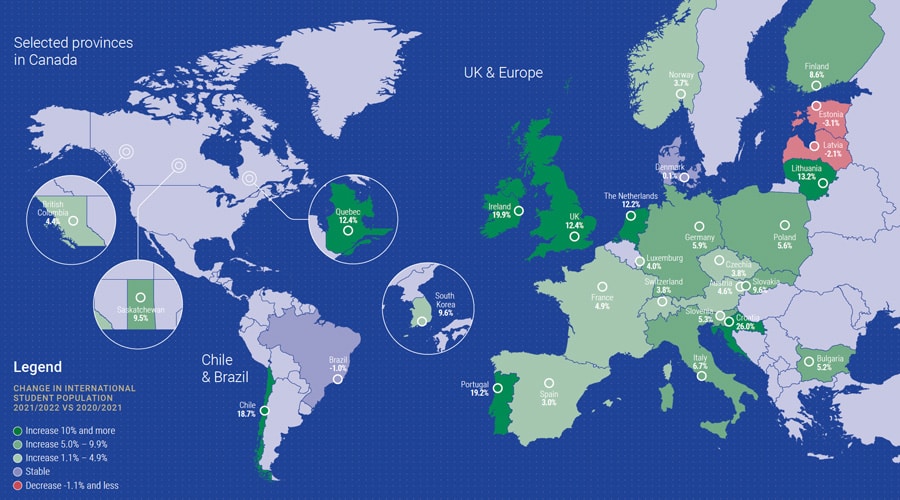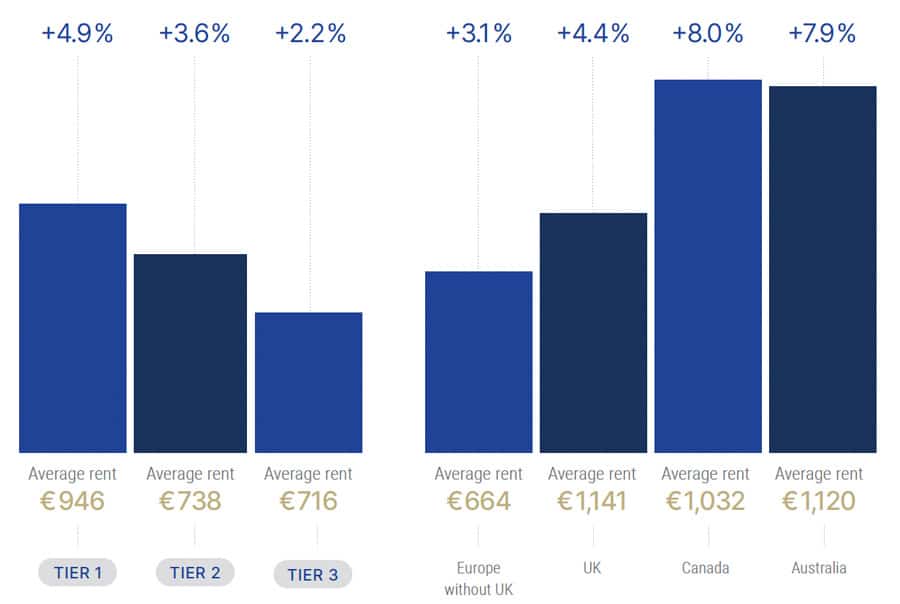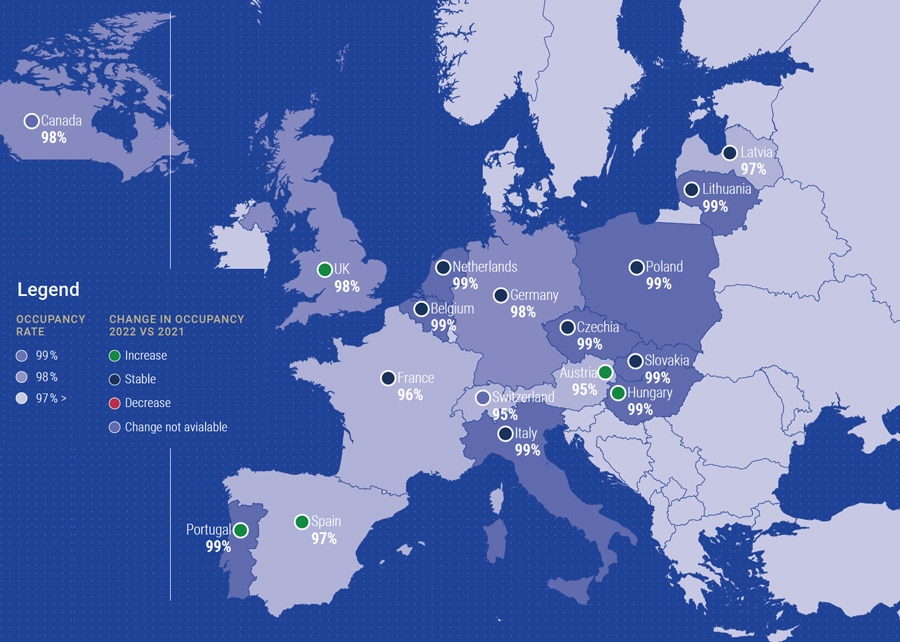Tracking global demand and price trends in purpose-built student accommodation
- Demand for student housing remains strong in destinations around the world
- That demand pattern is expected to hold even if, as expected, inflationary trends place additional upward pressure on rental rates for the coming academic year
The 2022 Student Housing Annual Report from industry research specialists BONARD provides important insights on purpose-built student accommodation (PBSA) stock across 253 markets in Europe, the Americas, Asia, and Australia. In total, those markets are home to 13,676 PBSA facilities, a third of which are managed by private-sector providers, and 2,255,678 beds.
One overarching theme in the report is of continuing strong demand into 2022, as we see reflected in the chart below.

The BONARD analysis also clearly makes the link between that continuing, strong demand and rental rates for PBSA housing, anticipating that in 2023: "Rent changes will reflect inflation to a greater extent. Unless the situation calms, the [2023/24] academic year may face a second wave of this pressure on rent levels. The main aspect of a strategic decision to provide a correction will remain the demand indicator…as a moderate increase in rent levels can be tolerated by the market in general."
Any such increases, however, will come on top of the upward pressure on housing prices in 2022. Driven as they were by surging inflation rates, year-over-year changes in rental rates, in some markets at least, have already been significant.

However, the ability and willingness of the student market to accommodate those rental increases is reflected in part in the consistently high occupancy rates for the sector, which continued into 2022.

BONARD adds that, "Overall, occupancy rates across Europe in 2022 averaged 98%, with the lowest value (95%) found in Austria and Switzerland. The asset class remained resilient against inflation as well as the energy crisis, which impacted the operation expenditure levels of most operators to a greater or lesser extent."
For additional background, please see:
Most Recent
-
Canada announces international student cap numbers for 2026 and updated programme guidance Read More
-
Building the bridge to campus: The first stage of student satisfaction begins long before admission Read More
-
The power of data and narrative in building public support for international students Read More
















